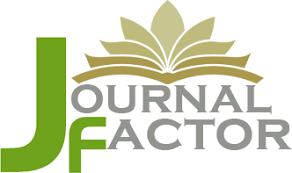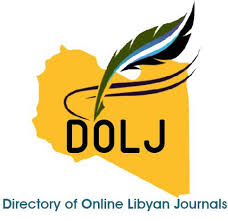Effect of Dental Posts used in Restoring Badly Broken Primary teeth
DOI:
https://doi.org/10.54361/LJM18-1.07Keywords:
shear bond strength, fracture resistance, endodontically, treated teethAbstract
Aim: The aim of this study was to evaluate the shear bond strength (SBS) and fracture resistance (FR) of endodontically treated primary anterior teeth restored: with composite resin reinforced with three different post systems. (1) Ribbon fiber posts; (2) glass fiber posts; and, (3) orthodontic metal wire posts cemented by glass ionomer cement (GIC).Methods: This experimental study conducted in a controlled laboratory setting was performed on 60 extracted human primary maxillary incisors. Samples were randomly divided into 3 groups of 20 teeth each: group 1 (ribbon fiber posts and composite core); group 2 (glass fiber posts and composite core) and group3 (orthodontic metal shaped wire posts and composite core). Each main test group subdivided into two subgroups (I, II) of 10 teeth each according to the laboratory test used, shear bond and fracture strength respectively. Mounted specimens were subjected to an Instron testing machine.Results: For shear bond strength, Stainless steel group recorded the highest mean value (14.4±2.4Mpa) followed by Glass fiber group (5.6±4.01Mpa) while ribbon fiber group recorded the lowest mean value (4.9±2.8Mpa). The difference between all groups was statistically significant (p<0.05) as indicated by ANOVA test. For fracture resistance, Glass fiber group recorded the highest mean value (146.018±37.96N) followed by ribbon fiber group (133.3±38.222N), while Stainless steel group recorded the lowest mean value (111.48±30.522N). The difference between all groups was statistically significant (p<0.05) as indicated by ANOVA test.Conclusion: orthodontic metal wire posts and glass fiber posts proved their advantages regarding the shear bond& fracture resistance respectively.
Downloads
References
- Mouradian WE. The face of a child: Children's oral health and dental education. J Dent Educ. 2001; 65: 821–831.
- Sharaf AA. The application of fiber core posts in restoring badly destroyed primary incisors. J Clin Pediatr Dent. 2002; 26: 217–224.
- Viera CL, Ribeiro CC. Polyethylene fiber tape used as a post and core in decayed primary anterior teeth: A treatment option. J Clin Pediatr Dent. 2001; 26: 1–4.
- Ngan P, Fields H. Orthodontic diagnosis and treatment planning in the primary dentition. ASDC J Dent Child. 1995; 62: 33.
- Kupietzky A, Waggoner WE, Galea J. Long-term photographic and radiographic assessment of bonded resin composite strip crowns for primary incisors: Results after 3 years. Pediatr Dent. 2005; 27: 221–225.
- Grewal N, Seth R. Comparative in vivo evaluation of restoring severely mutilated primary anterior teeth with biological post and crown preparation and reinforced composite restoration. J Indian Soc Pedod Prev Dent. 2008; 26:141–148.
- Kimmel SS. Restoration and reinforcement of endodontically treated teeth with a polyethylene ribbon and prefabricated fiber glass post. Gen Dent 2000; 48: 700–706.
- Newman MP, Yaman P, Dennison J, Rafter M, Billy E. Fracture resistance of endodontically treated teeth restored with composite posts. J Prosthet Dent 2003; 89: 360–367.
- Eshghi A, Esfahan RK, Khoroushi M. A simple method for reconstruction of severely damaged primary anterior teeth. Dent Res J 2011; 2013: 221–225.
- A Mortada, N.M King: A simplified technique for the restoration of severely mutilated primary anterior teeth. J. Clin Pediatr Dent 2004; 28: 187-192.
- Motisuki C, Santos-Pinto L, Giro EM. A simple method for reconstruction of severely damaged primary anterior teeth. Quintessence Int. 2004; 35: 263-268.
- Rocha Rde O, das Neves LT, Marotti NR, Wanderley MT, Corrêa MS. Intracanal reinforcement fiber in pediatric dentistry: a case report. Quintessence Int. 2004; 35: 263-268.
- Qualtrough AJ, Mannocci F. Tooth-colored post systems: a review. Oper Dent 2003; 28: 86-91.
- M. C. Vitale, C. Caprioglio, A. Matrignone, U. Matrignone, and A. R. Botticelli, “Combined technique with polyethylene fibers and composite resins in the restoration of traumatized anterior teeth,” Dental Traumatology. 2004; 20: 172-177.
- Aminabadi NA, Farahani RM. The efficacy of a modified omega wire extension for the treatment of severely damaged primary anterior teeth. J Clin Pediatr Dent. 2009; 33: 283–288.
- Meiers JC, Kazemi RB, Donadio M. The influence of fiber reinforcement of composites on shear bond strengths to enamel. J Prosthet Dent 2003; 89: 388-393.
- Subramaniam P, Babu KL, Sunny R. Glass fiber reinforced composite resin as an intracanal post—a clinical study. J Clin Pediatr Dent, 2008; 32: 207–210.
- Kim JH, Park SH, Park JW, Jung IY. Influence of post types and sizes on fracture resistance in the immature tooth model. J Korean Acad Conserv Dent. 2010; 35: 257-266.
- Fernandes AS, Shetty S, Coutinho I. Factors determining post-selection: A literature review. J Prosthet Dent 2003; 90: 556-562.
- Bolhuis P, De gee A, Feilzer A. Influence of fatigue loading on four post-and-core systems in maxillary premolars. Quintessence Int 2004; 35: 657-667.
- Lanza A, Aversa R, Rengo S, Apicella D, Apicella A3D FEA of cemented steel, glass and carbon posts in a maxillary incisor. Dent Mater. 2005; 21: 709-715.
- Sahafi A, Peutzfeldt A, Ravnholt G, Asmussen E, Go tfredsen 1`K Resistance to cyclic loading of teeth restored with posts. Clin Oral Investig. 2005; 9: 84-90.
- Fidel SR, Sassone L, Alvares GR, Guimaraes RP, Fidel RA. Use of glass fiber post and composite resin in vertical fractures tooth. Dent Traumatol 2006; 22: 337-339.
- Duret B, Reynaud M, Duret F. New concept of corono radicular reconstruction: the Composite post (1) Chir Dent Fr. 1990; 60: 131-141.
- Salameh Z, Sorrentino R, Ounsi HF, Sadig W, A tiyeh F, Ferrari M. The effect of the different full-coverage crown system on fracture resistance and failure pattern of endodontically treated maxillary incisors restored with or without glass fiber posts. J Endod. 2008; 34: 842-846.
Downloads
Published
Issue
Section
License
Copyright (c) 2024 Tebra Ramadan Alkayakh, Abdulrahim Mohamed Aldarewesh (Author)

This work is licensed under a Creative Commons Attribution-NonCommercial-NoDerivatives 4.0 International License.
Open Access Policy
Libyan journal of medical Research (LJMR).is an open journal, therefore there are no fees required for downloading any publication from the journal website by authors, readers, and institution.
The journal applies the license of CC BY (a Creative Commons Attribution 4.0 International license). This license allows authors to keep ownership f the copyright of their papers. But this license permits any user to download , print out, extract, reuse, archive, and distribute the article, so long as appropriate credit is given to the authors and the source of the work.
The license ensures that the article will be available as widely as possible and that the article can be included in any scientific archive.
Editorial Policy
The publication of an article in a peer reviewed journal is an essential model for Libyan journal of medical Research (LJMR). It is necessary to agree upon standards of expected ethical behavior for all parties involved in the act of publishing: the author, the journal editorial, the peer reviewer and the publisher.
Any manuscript or substantial parts of it, submitted to the journal must not be under consideration by any other journal. In general, the manuscript should not have already been published in any journal or other citable form, although it may have been deposited on a preprint server. Authors are required to ensure that no material submitted as part of a manuscript infringes existing copyrights, or the rights of a third party.
Authorship Policy
The manuscript authorship should be limited to those who have made a significant contribution and intellectual input to the research submitted to the journal, including design, performance, interpretation of the reported study, and writing the manuscript. All those who have made significant contributions should be listed as co-authors.
Others who have participated in certain substantive aspects of the manuscript but without intellectual input should only be recognized in the acknowledgements section of the manuscript. Also, one of the authors should be selected as the corresponding author to communicate with the journal and approve the final version of the manuscript for publication in the LJMR.
Peer-review Policy
- All the manuscripts submitted to LJMR will be subjected to the double-blinded peer-review process;
- The manuscript will be reviewed by two suitable experts in the respective subject area.
- Reports of all the reviewers will be considered while deciding on acceptance/revision or rejection of a manuscript.
- Editor-In-Chief will make the final decision, based on the reviewer’s comments.
- Editor-In-Chief can ask one or more advisory board members for their suggestions upon a manuscript, before making the final decision.
- Associate editor and review editors provide administrative support to maintain the integrity of the peer-review process.
- In case, authors challenge the editor’s negative decision with suitable arguments, the manuscript can be sent to one more reviewer and the final decision will be made based upon his recommendations.













